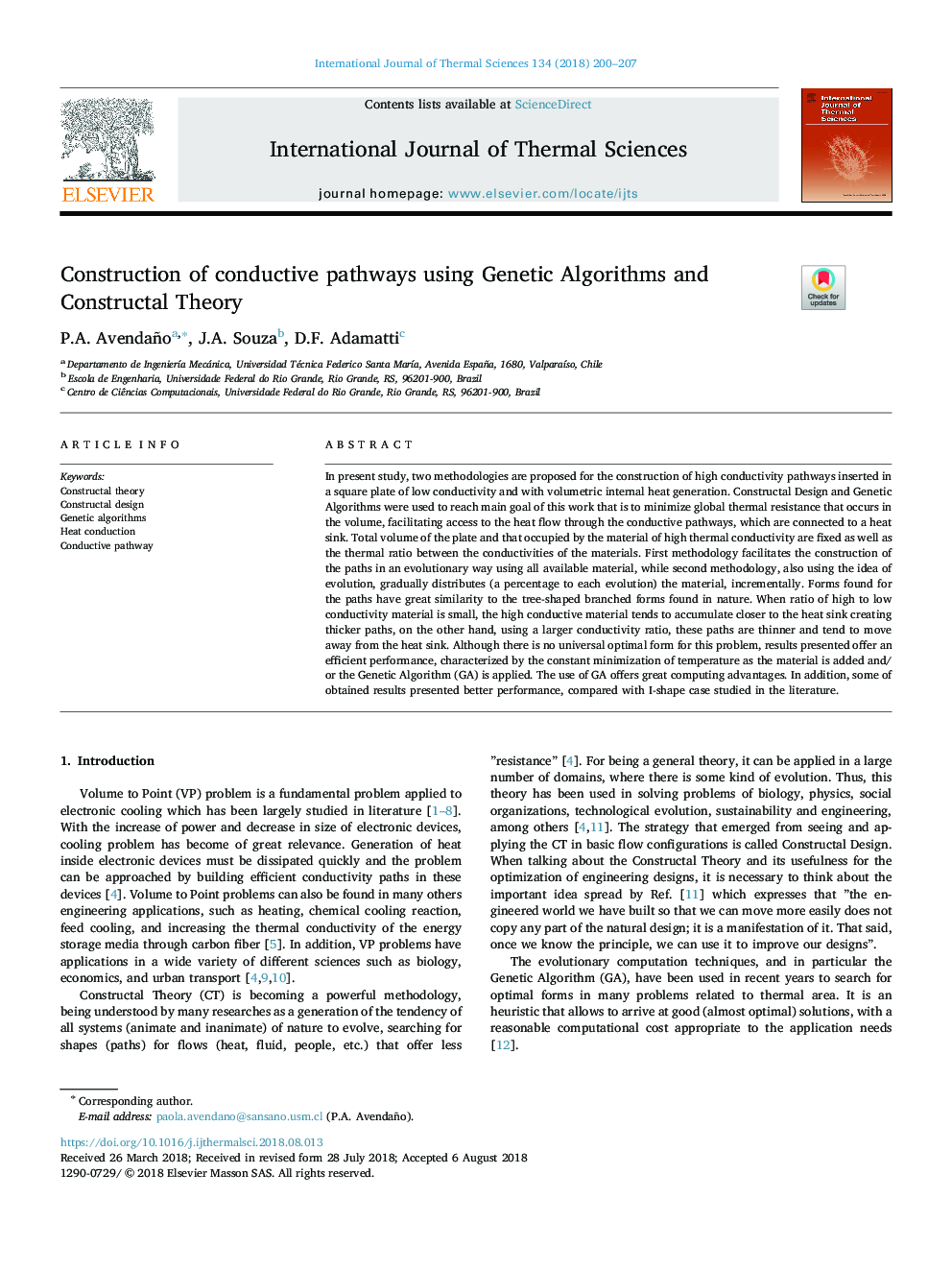| Article ID | Journal | Published Year | Pages | File Type |
|---|---|---|---|---|
| 7060520 | International Journal of Thermal Sciences | 2018 | 8 Pages |
Abstract
In present study, two methodologies are proposed for the construction of high conductivity pathways inserted in a square plate of low conductivity and with volumetric internal heat generation. Constructal Design and Genetic Algorithms were used to reach main goal of this work that is to minimize global thermal resistance that occurs in the volume, facilitating access to the heat flow through the conductive pathways, which are connected to a heat sink. Total volume of the plate and that occupied by the material of high thermal conductivity are fixed as well as the thermal ratio between the conductivities of the materials. First methodology facilitates the construction of the paths in an evolutionary way using all available material, while second methodology, also using the idea of evolution, gradually distributes (a percentage to each evolution) the material, incrementally. Forms found for the paths have great similarity to the tree-shaped branched forms found in nature. When ratio of high to low conductivity material is small, the high conductive material tends to accumulate closer to the heat sink creating thicker paths, on the other hand, using a larger conductivity ratio, these paths are thinner and tend to move away from the heat sink. Although there is no universal optimal form for this problem, results presented offer an efficient performance, characterized by the constant minimization of temperature as the material is added and/or the Genetic Algorithm (GA) is applied. The use of GA offers great computing advantages. In addition, some of obtained results presented better performance, compared with I-shape case studied in the literature.
Related Topics
Physical Sciences and Engineering
Chemical Engineering
Fluid Flow and Transfer Processes
Authors
P.A. Avendaño, J.A. Souza, D.F. Adamatti,
